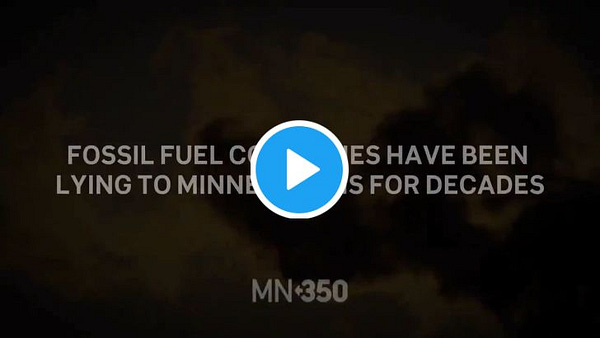It’s hot as hell in the Southwest. We can blame it on Big Oil.
Exxon knew nearly 50 years ago the Western U.S. would be hot. Are we surprised?
This week’s edition is written by our digital content strategist Abbey Dufoe. You can catch up with her on Twitter here.
The heat in the Western United States is shattering June temperature records right now. Death Valley (124°F) and Las Vegas (116°F) have already beat their records, and places like Sacramento and Los Angeles are projected to reach temperatures higher than average for June — over 110°F 😳. Phoenix hit 115°F this week, the highest temperature there so far this year, while Palm Springs bakes at 120°F.
From Axios: "More than 40 million people across the West and Southwest are likely to see temperatures in their area exceed 100°F during the next several days.” — that’s 12% of Americans.
Grid operators and firefighters are on high alert as temperatures reach triple digits in Texas, Colorado, and Montana, too. And summer hasn’t even started.
Thanks to record-breaking heat and drought, this year’s fire season is shaping up to be one of the worst on record in the West. Now where have we heard that before? Oh right… last year, and the year before that.


Lack of rainfall and hotter temperatures, paired with drought, is helping make wildfires bigger and faster moving, especially in California, which is primed to have one of the worst wildfire seasons ever.

Fires are already burning in Arizona (and in Montana, New Mexico, and Utah). The Telegraph Fire, which started in early June outside of Phoenix, has grown to over 165,000 acres and has forced evacuation orders after it jumped containment lines and merged with a nearby fire.


The consequences of this extreme heat and prolonged drought across the West are dire. Oakely, Utah, is banning new construction projects, an effort to do “whatever they can” to conserve water. “If a fire broke out in town, and the fire department came to hook into a fire hydrant to put it out, they would have no water,” said Mayor Wade Woolstenhulme.
What's Big Oil's role in wildfires and drought? As we all now know, climate change is making these problems worse. So what did Exxon know and when did they know it?
If you increase air temperature, you’re going to dry out the landscape, making fire a bigger threat. Exxon knew this back in 1979. They knew, and we quote, “the Southwest states would be hotter, probably by more than 3°F, and drier.” Well, they were right. See below, from an internal Exxon memo:
The burning of fossil fuels increases global temperatures (as mentioned in this very document, from Exxon themselves), which leads to an increase in fire danger. In the Sierra Nevadas, and elsewhere, this has contributed to an extension in fire season.
Climate models predict that global warming will cause autumns in California to get warmer and drier, and for the rainy season to begin later, much like the last few years. And studies show that the amount of area burned by wildfire could jump 77% by the end of the century.
Trends show more precipitation falling as rain instead of snow, too, which leads to decreased snowpack (as Exxon predicted 42 years ago).
These impacts will cost the Western U.S. dearly, in both dollars and lives. We can’t lose sight of the fact that corporate polluters that caused climate change — and then lied about it — are making this crisis worse, and they need to be held accountable.
Deception spotlight:
In a new video from MN 350, experts speak on the dangerous impacts of decades of deception from the fossil fuel industry on Minnesota’s land, health, and livelihood.


ICYMI News Roundup



